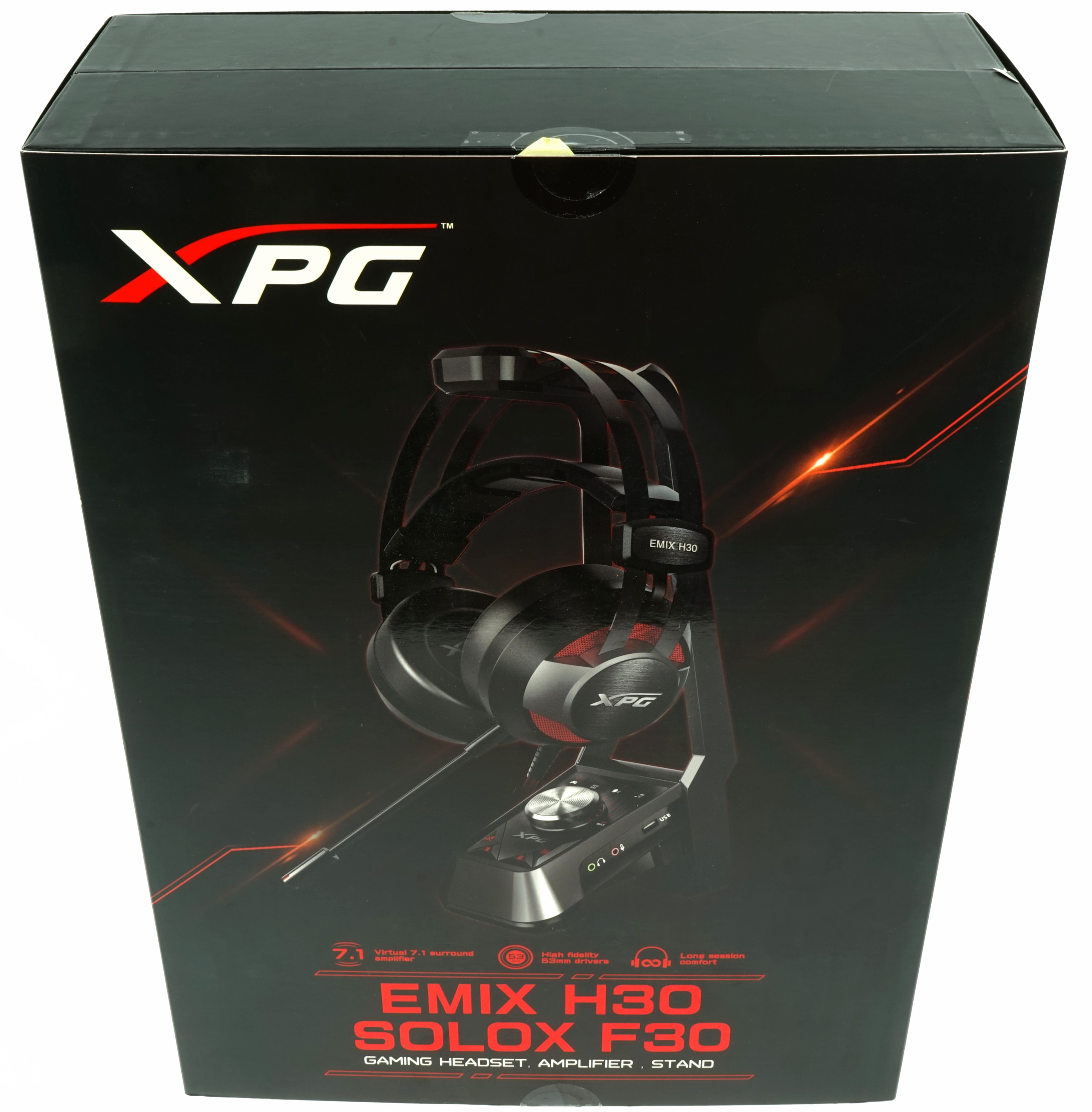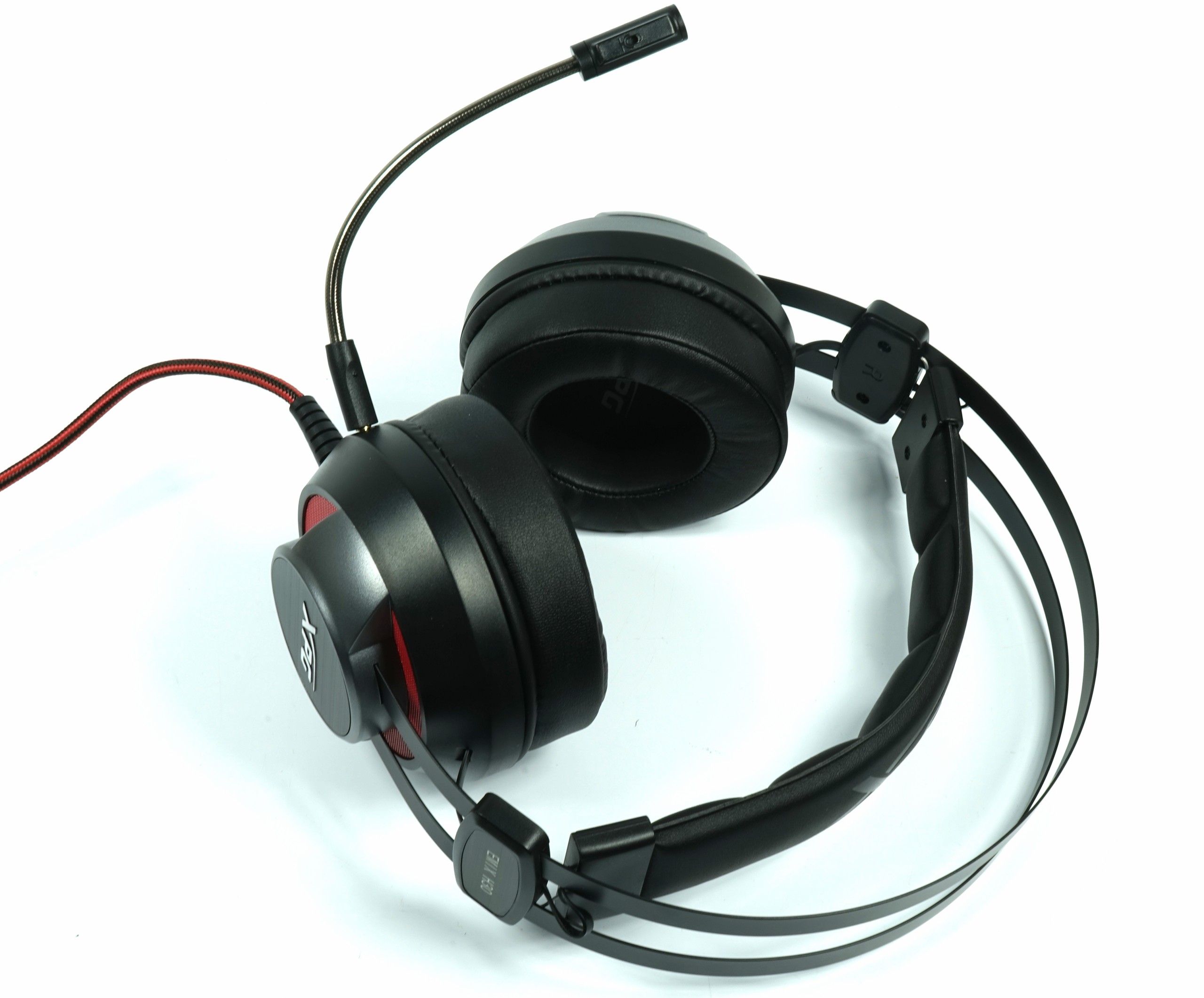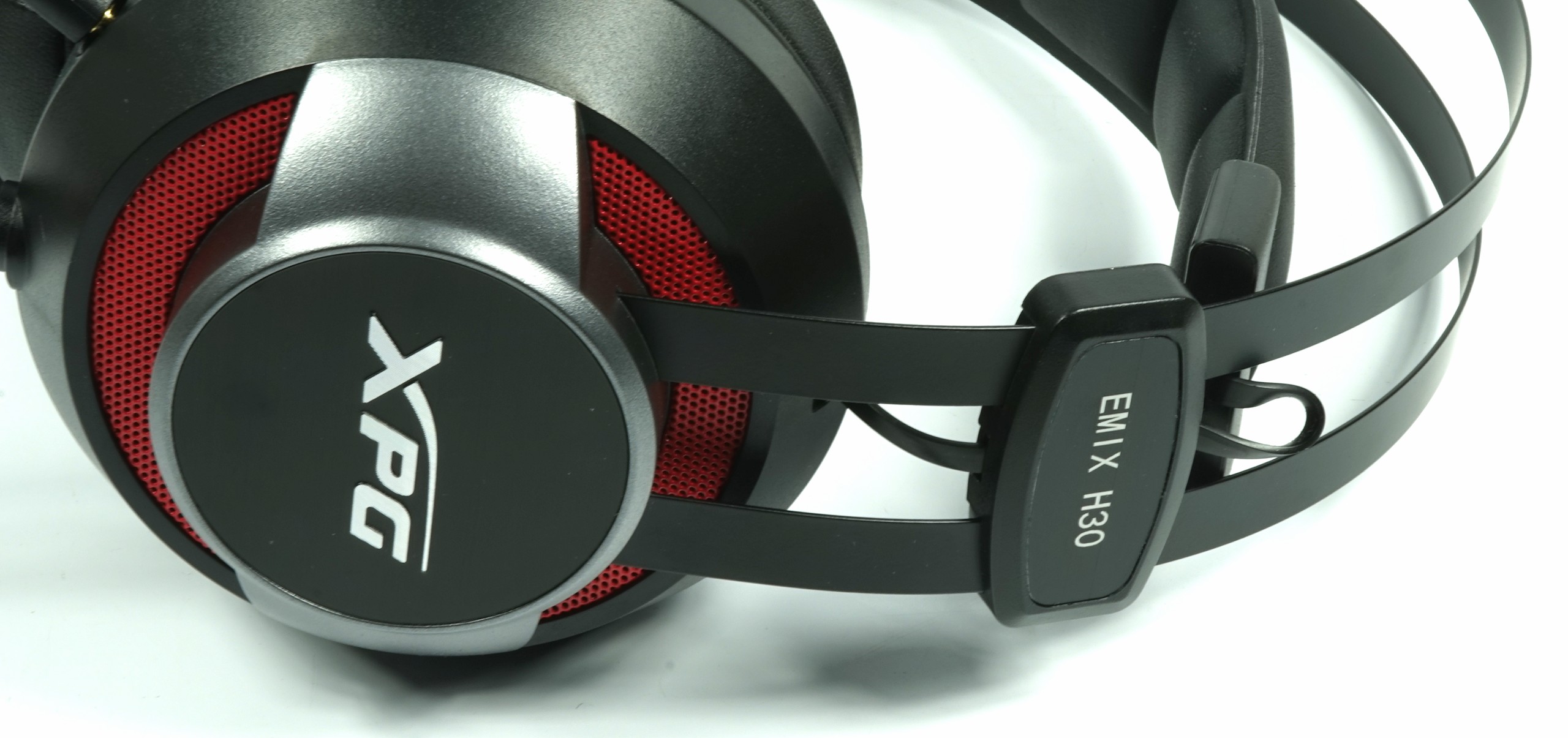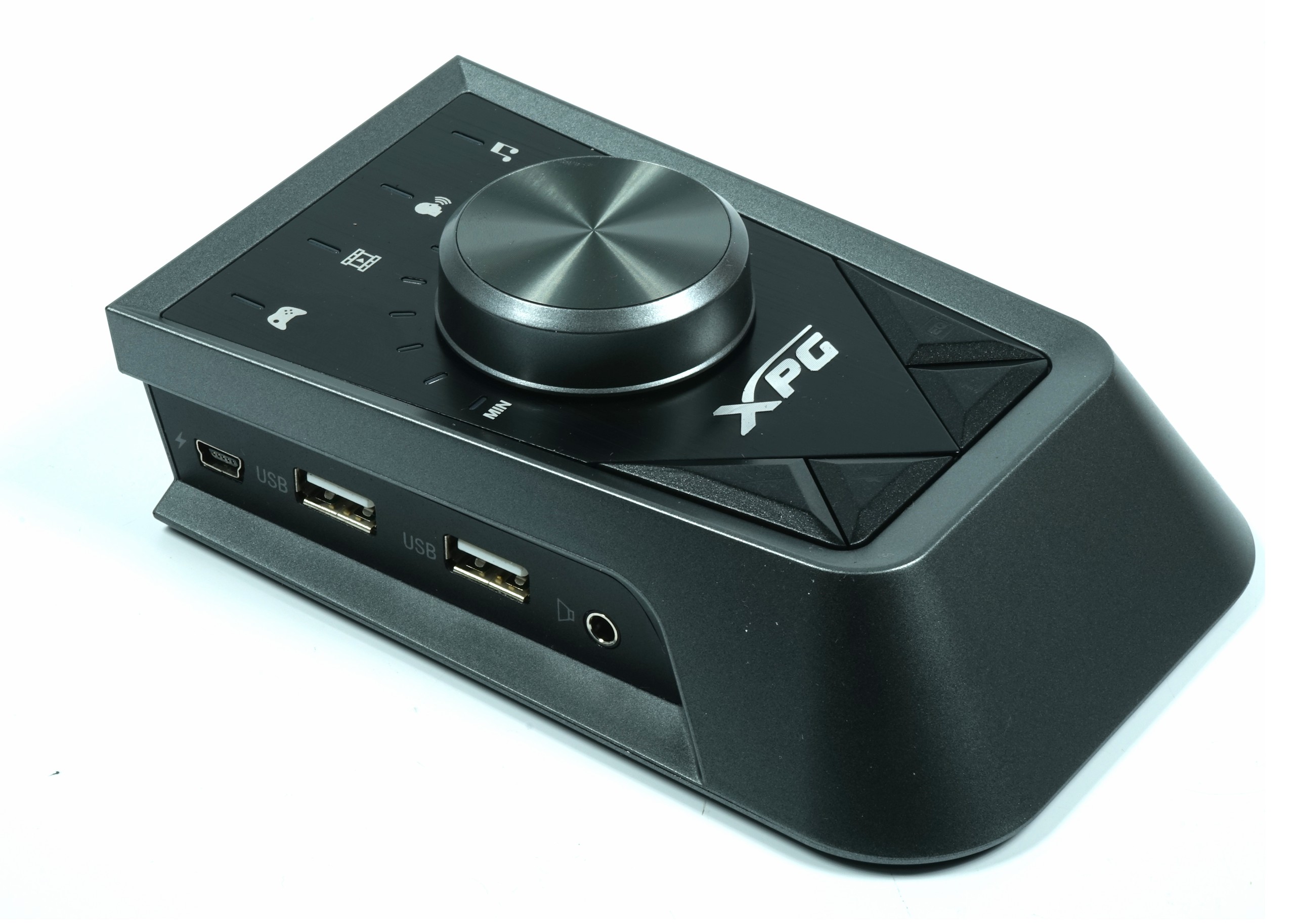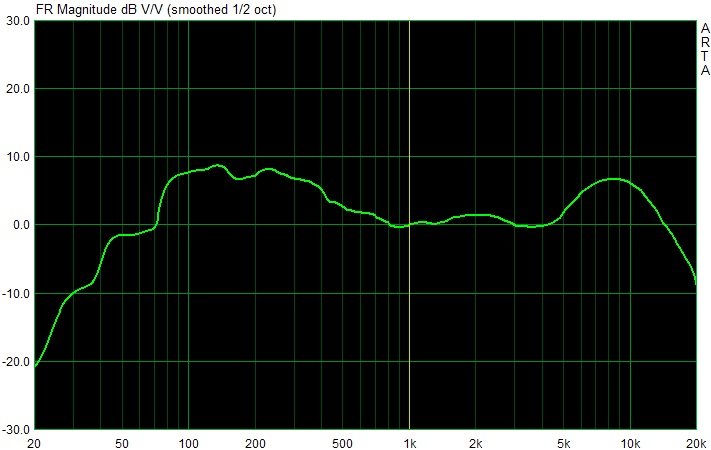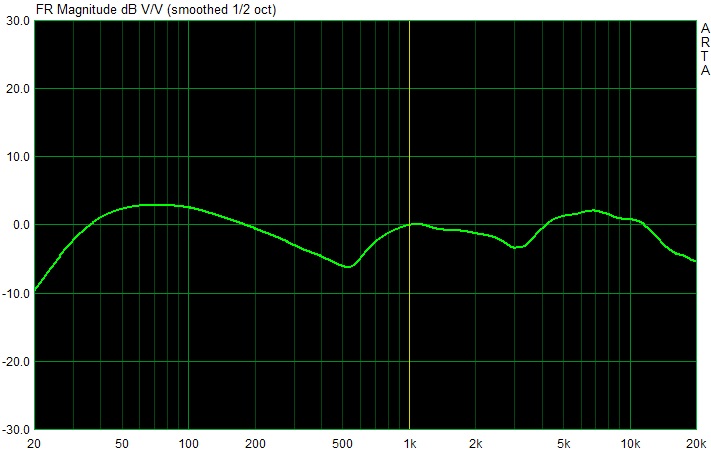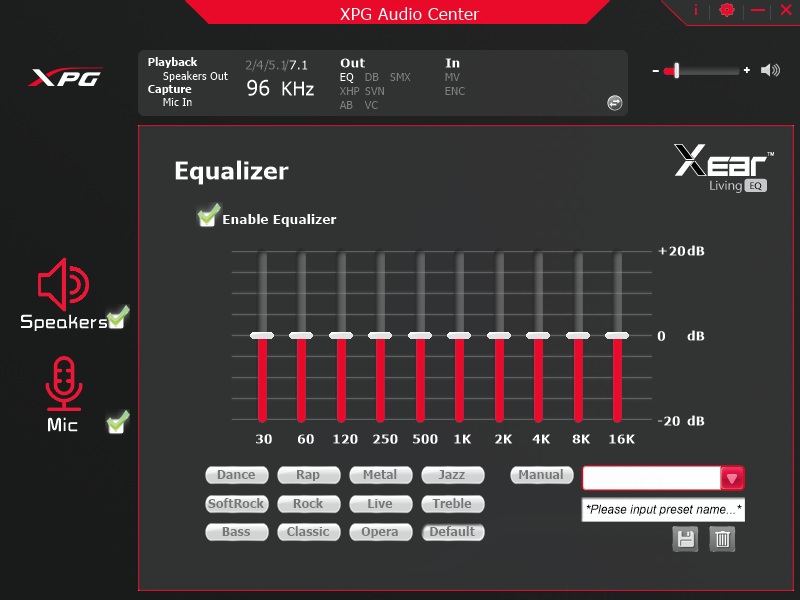Early Verdict
We like to think that superior audio is the best way to justify a high price. Adata instead leans on bundled extras, more connectivity, and sometimes questionable acoustic features for its $200 Emix H30 headset and Solox F30 amp. This setup's performance isn't bad, though, and it certainly gets better after tuning its software-based equalizer. Gamers with plenty of money may want to take a look, particularly if they have a favorite speaker system they'd like to hook up concurrently.
Pros
- +
Comprehensive bundle, including amplifier and stand
- +
Line out to separate speaker system
- +
Solid audio performance (after optimizations)
Cons
- -
Prohibitively expensive
- -
Audio modes always active with no way to bypass
- -
Not particularly mobile solution
Why you can trust Tom's Hardware
The recipe goes a little something like this: find an OEM with experience in a certain field, a marketing expert who believes they know what the target audience wants, and some PR specialists to dress it all up. What comes out the other end should be a smash hit with gamers, right? If only it was that easy. To be sure, it looks like Adata's XPG brand is hoping for a winning combination. After all, its Emix H30 headset and Solox F30 amplifier combination is ambitiously priced at $200. Is the company's confidence justified?
Adata's bundle includes the Emix H30, of course, a detachable microphone, a bag for the headset, an introductory manual, a stand, the Solox F30 amplifier, and a 1.6m USB cable for hooking the amp up to your platform of choice. Don't expect the bag to be particularly useful; this isn't the kit we'd recommend for gamers on the go.
The combination of connectors is average by today's standards. It would have been nice to see Adata replace the cumbersome Y-cable and USB 2.0 interface with a state-of-the-art Type-C connection, particularly given such a hefty price premium. But it'll be months before peripheral manufacturers catch up with this trend only recently started by motherboard companies.
Specifications
Look & Feel
Wherever you look, you'll find plastic. From the stand to the amplifier housing to the headset itself, the same anthracite-colored plastic dominates everything. At least the headband is made of blackened steel. A second glance reveals additional small metal elements as well.
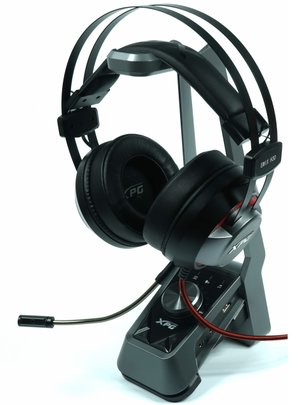
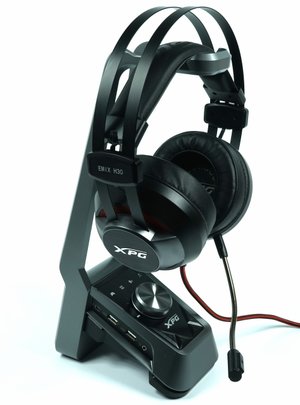
The stand is stable enough to not topple easily, even if the headset is plopped onto its cradle hurriedly. Because the stand's weight and dimensions are balanced well, it doesn't take up unnecessary space on your desk. The amplifier fits onto the bottom and is held in place magnetically, creating a nice, neat presentation. Then, the assembly comes apart easily if you need to move it.
The headset consists of the aforementioned plastic body and non-adjustable steel headband. Each ear piece is decorated with a red metal mesh that conceals LED lighting. And a detachable mic with a jack connector is easy to pop in and out.
Comfort
Adata's Emix H30 can be adjusted in two different ways to make it fit properly on your head. First, there's a familiar mechanism for extending the headband's length. And second, you have to rely on the band's lateral flexibility.
Get Tom's Hardware's best news and in-depth reviews, straight to your inbox.
There are no hinges to twist and turn. For comfort, Adata counts on the plushness of its polyurethane cushions to apply the right amount of pressure. Unfortunately, these cannot be removed without damaging the headset, so the only way to keep them clean is wiping them down every so often.
The cushions create a relatively tight seal, while the headband is a little too stiff. During testing, we found that the ear pieces weren't positioned ideally, and applied different pressure levels. Ultimately, this affects what you hear coming from the headset, varying based on head shape and how the ear pieces sit.
Functionality & Interface
The microphone is plugged in at the bottom. Just pay close attention to the slightly flattened part, else the pieces won't fit together. Although the assembly feels stiff, it's also nice and secure.
Adata's hard-wired cable is covered with a fabric weave. It offers sufficient strain relief and should take quite a bit of bending back and forth over time without shorting out. Contrary to the official specs, this cable is ~2.2m-long, making it about 20cm shorter than advertised. That should still be more than enough, though.
One thing that keeps this headset from being a good portable option is its extra USB port, needed for the colorful lighting in each ear piece.
Solox F30 Amplifier
C-Media hardware (CM6571) is used as a foundation in several USB-based headsets with simulated 7.1-channel output and digital signal processing. The Cougar Immersa Pro and Tt eSports Cronos Riing RGB 7.1 are both examples, with identical off-the-shelf audio presets that tend to sound pretty horrible. Adata's Emix H30/Solox F30 is just the latest to hit our lab.
The Solox F30 includes an integrated USB 2.0 hub with support for two additional devices. It's all powered by a USB 2.0 cable sporting a mini-USB connector and Y-plug, which provides up to 1A of current. USB 3.0 would have made more sense, but also would have added cost.
On the left side, a 3.5mm output can send a signal to external speakers, either separate from the headset or simultaneously with it.
The right side has two 3.5mm jacks for the headset and its mic, as well as a USB connector for the LED lighting.
A round knob on top adjusts the volume, and four buttons below it let you switch between preset sound profiles (Gaming, Cinema, Voice, and Music).
If the sound is to remain free of distortion, the headset falls just a bit short of hitting its 100mW peak that the 32 ohm headphones are supposed to deliver (if Adata's spec sheet is to be trusted). But the result is still satisfactory; an achievable 50 to 75mW per channel is alright by us.
Microphone
The 2.7mm-class, omni-directional, gooseneck microphone functions the way it should, though it doesn't employ an active low-cut. Its sensitivity is fine, as is its level stability.
The mic's frequency range, as specified by Adata, is fully covered. That's actually unnecessary, since frequencies below 100 Hz aren't really needed. They're responsible for useless rumbling sounds and wind noises, which you really want to avoid altogether.
C-Media's controller offers a separate five-channel equalizer for all mic/line inputs prior to the multiplexer. However, the software doesn't support this yet, unfortunately.
Some slight residual noise is present, but it's not dominant. Ultimately, speech intelligibility is good, though not outstanding.
Measurements & Sound-Check
To read about our test methodology in depth, please check out How We Test Gaming Headsets, particularly page 6 where we detail the measurements we take.
To start our quantitative testing, we measure Adata's Emix H30 using the lab's reference amplifier.
The original curve doesn't look bad at all, aside from a dent at about 520 Hz. As with Corsair's HS50, we attribute this dip to the driver and an unstable impedance curve (we noticed that the higher the output resistance of the source, the more severe this drop became). At this point, the driver's impedance should be well above 32 ohms, leading to a partial drop in volume. However, levels can be compensated for, to a certain extent, with an equalizer.
The Solox F30's Sound Profiles
Next, we connect the bundled Solox F30 amplifier. Unfortunately, one of its four sound presets is always active. Even activating the equalizer in Adata's software won't override them; that only serves as an offset. We consider this to be a design flaw, as it simply doesn't make any sense.
Just to make sure we weren't imagining things, we switched the equalizer on and off, measuring the four profiles each time. However, the results with and without setting all controls to neutral always came out the same. If you wish to adjust the equalizer yourself, the following four curves provide a good overview of the acoustic impact. Subjectively, we suggest using the "Voice" or, if necessary, "Music" preset as a baseline for experimenting with. "Gaming" is too bass-heavy and "Cinema" over-emphasizes the higher frequencies.

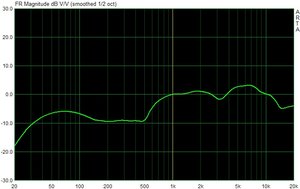
Using the "Voice" profile, it's possible to iron out the 520 Hz dent, and boost the low bass and higher frequencies to get a more balanced sound. Don't expect much from this system, though. While the software pretends to adjust up to 10 channels, C-Media's chip actually only supports five. More than that can only be achieved by interpolating the controller settings.
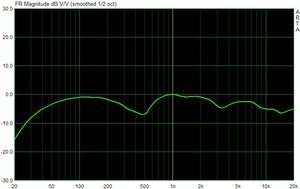
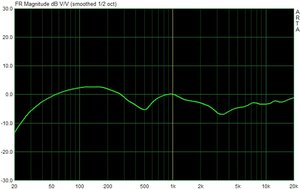
We've discussed the absurdity of these equalizer profiles in a number of other headset reviews. To give an example, what the manufacturer calls its "Classic" preset presents us with a roller coaster ride down a heavy bass curve and up the tall treble amplifications, full-speed ahead. It just sounds wrong. We certainly wouldn't recommend any other company with a C-Media-based solution implement the same profiles.
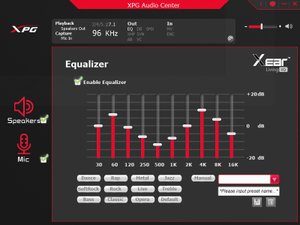

Subjective Audio Experience: Original Versus Optimized
Now let's subjectively test the original tuning (without any of the ridiculous equalizer profiles) compared to the results of our manual equalizer adjustment.
Bass Reproduction
We test the lowest bass in the sub-contra octave (16.4 Hz to 32.7 Hz) with a recording of Bach's Toccata and Fugue in D minor (19 and 25 Hz), as well as the festival overture composed in 1880 by Tchaikovsky (10 Hz and 12.5 Hz). The same applies to the lower ranges of the contra octave (32.7 to 65.4 Hz). The large bass drum, usually tuned to ~55 to 60 Hz, is used to complete this evaluation.
Despite a slight drop in level below 40 Hz, the lowest bass is still there. Transient response is respectable as well, even through the Solox F30. The sub-contra octave is audibly present, which we definitely don't take for granted in the gaming headset category.
Reproduction of the large bass drum is quite crisp, despite an overall softer system setup. Very low-tuned bass guitars can be an acoustic treat when bass isn't over-exaggerated, and we neither heard nor measured annoying resonances from Adata's Emix H30.
Upper bass, up to 150 Hz, contains the male voice's fundamental speech frequency. Thus, it has a strong influence on the lifelike reproduction of male vocals.
This range sounds balanced and natural, even if it appears a little exaggerated by the numbers. The reproduction of male vocals is both rich and warm, while instruments sound as they should. The resolution we observe is acceptable, allowing non-dominant sound sources to perform well.
Mid-Range
The lower mid-range (sometimes called "fundamental range") spans from ~150 to 400 Hz. Together with the upper bass, this range plays an important role in producing the subjectively perceived warmth and fullness of sound. This is also where the fundamental range of female vocals can be found.
The reproduction of female vocals is acceptable. Vocals and instruments lean toward the warm side at first, but get drowned out at higher frequencies. At that point, unstable impedance and the aforementioned dent start to show through in our results.
The upper mid-range, from 400 Hz to about 2 kHz, contains the 1 kHz point that's used as a reference for many measurements. Unfortunately, this is often very noticeable, especially with cheaper devices, as manufacturers tend to overemphasize it a bit. This frequency range also plays a significant role in gaming, and its balanced reproduction contributes significantly to good spatial resolution.
The real problem area makes itself known at about 500 Hz. Without our help (using a software equalizer), many instruments lack important nuances, causing sound resolution to suffer enormously. A lot of the detail is either blurred or lost entirely. Fortunately, the sound stage and subjectively-perceived spacial resolution are both relatively good after our modification. In the end, you'll want to boost the 500 Hz range a bit.
From a purely subjective point of view, music fans should perceive the orchestra positioned wide enough, even if some quieter sources can be hard to place. These simply are not hi-fi headphones, despite the improvements we made through Adata's software equalizer. Nevertheless, for most PC enthusiasts, the results are sufficient.
High-Frequency Range
Between 2 kHz and 3.5 kHz is where the human ear is most sensitive, especially since the lower levels of this range are responsible for the human voice's overtone reproduction. This frequency range is crucial to the recognition of a voice or an instrument. Thus, in this context, it also relates to the respective tone color, or timbre.
In-game localization gives us little to complain about, even if we're once again bothered by the small drop in sound level. And music reproduction only suffers a few weak spots. We've certainly heard worse. In fact, the curve looks more dramatic than it actually sounds.
The mid-high range (3.5 to 6 kHz) determines the success or failure of speech reproduction as a whole, since sibilant sounds (like the letter "s" and hiss sounds) fall into it. The upper trebles range up to about 10 kHz, where we pass into the territory of super-high frequencies.
High and super-high frequencies are very pronounced without being exaggerated. Their reproduction doesn't sound metallic or sharp, and there are no over-emphasized sibilants or air noises. Resolution ranges from good to very good, and it's appropriate for this price category. The slight level drop beyond ~12 kHz is due to the soft ear pads and their imprecise positioning. This problem could probably be solved by Adata with some optimization.
Conclusion
We are torn here. On one hand, you get a box full of interesting extras, even though you probably won't use most of them. On the other, C-Media's widely-used controller does nothing to make this headset unique. Really, the Emix H30's biggest assets are its bundled stand and separate Solox F30 headphone amplifier, which exposes C-Media's line-out to support a speaker system you might already have sitting around.
You already know what we think about simulated surround sound, and Adata's implementation shares the same fate as other wannabe 7.1-channel solutions we've reviewed. If you're convinced that this feature improves spacial localization, you're welcome to use it. But it definitely doesn't improve sound.
In that regard, the sound quality you get from Adata's Emix H30 is fine, even if it can't replicate a real hi-fi experience. This headset's target market is definitely affluent gamers who want to listen to a bit of music between sessions. If you don't get crazy with the equalizer, and you plug the hole around 520 Hz, there's plenty here to enjoy. After all, with the right settings, those 50mm drivers do deliver a proper result (and loudly, if you wish).
MORE: Best Deals
MORE: Best PC Builds

Igor Wallossek wrote a wide variety of hardware articles for Tom's Hardware, with a strong focus on technical analysis and in-depth reviews. His contributions have spanned a broad spectrum of PC components, including GPUs, CPUs, workstations, and PC builds. His insightful articles provide readers with detailed knowledge to make informed decisions in the ever-evolving tech landscape
-
AgentLozen This thing looks really neat but the review doesn't make it seem that appealing.Reply
I was reading the Best VR Headset article a few minutes ago and it made me think that Tomshardware needs best speakers and best headset articles too. I'd like to know what toms thinks is the "go to" headset when you're making a buying decision. -
hannibal The best advise is to buy reasonable priced Hi-Fi headphones and separate mic.Reply
Something like shennheiser 495
https://www.whathifi.com/sennheiser/cx495/review
Or similar. Those try to reproduce sound as it was intended to be hear, not make it some gimmick. -
hannibal Or bigger HD 485Reply
http://www.techradar.com/reviews/audio-visual/hi-fi-and-audio/headphones/sennheiser-hd-485-96067/review -
hannibal And if you have more moneyReply
Hd650 is ok
https://www.head-fi.org/showcase/sennheiser-hd-650-headphones.9315/reviews
But the point is. Go for Hi-Fi headphones and think how much you Are ready to pay. There is no practical upper limit how high you can go. But even reasonable amounth of money gives you something that is better than normal Gaming headphones. Good quality mic is not big deal to get separately. -
hannibal And some reviews From this yearReply
https://www.whathifi.com/best-buys/headphones/best-headphones -
FormatC Reply
The answer is really simple. It's not bad at all and worth to think about it. But we need to see it every time in relation to the price. C-Media's pre-definded sound profiles are simply painful and unusable. The built-in equalizer is very limited too, because it depends additional at the chosen profile. This is a really stupid solution, sorry. If you see only the headsets, they are ok. But the combination is a little bit overpriced. I measured it in the chamber and tried it by myself. I do this things with headsets since over 30 years and to be honest - it is only mainstream. ;)20661149 said:This thing looks really neat but the review doesn't make it seem that appealing.
...
@hannibal:
We pushed the reviews (also the older from me) to start such a thing soon. But I test it more in-depth and measure it - this costs time. The usual Hi-Fi blah-blah helps nobody. It's mostly a big bubble of meaningless words. It is difficult, to write it understandable and to be not too short and flat ;)
